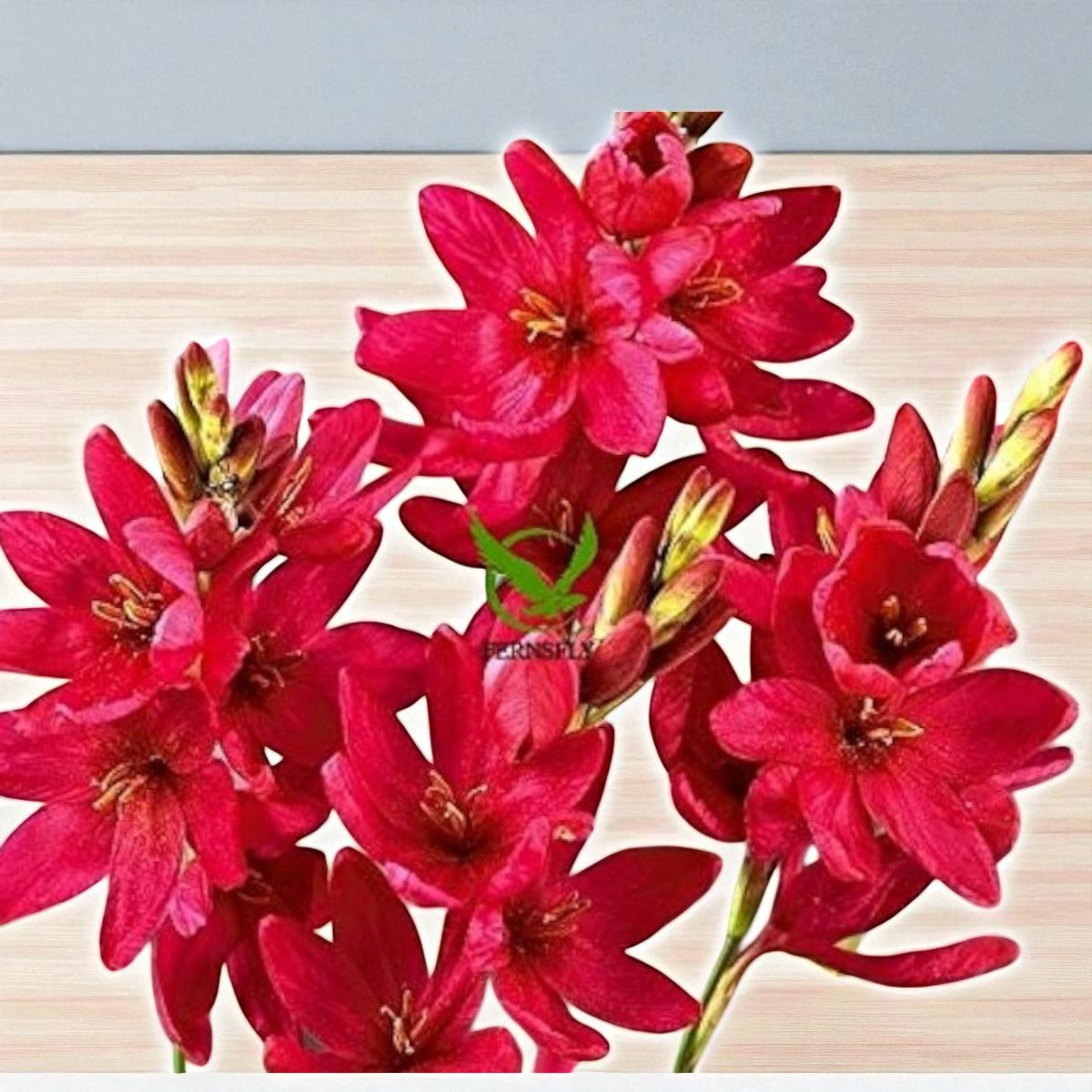
How to Grow Stevia Seeds: A Complete Guide
Stevia (Stevia rebaudiana), a plant native to South America, has become popular worldwide as a natural sugar alternative. Known for its intensely sweet leaves, it provides a low-calorie solution to sweetening foods and beverages. Stevia can be grown in home gardens or containers, making it accessible for many enthusiasts. This guide covers everything you need to know about growing stevia from seeds, from germination and transplanting to caring for mature plants. Let’s dive into how you can successfully grow your own stevia plant at home.
1. Understanding Stevia: A Natural Sweetener
Stevia contains compounds called steviol glycosides, which are up to 300 times sweeter than sugar without impacting blood sugar levels. It’s a fantastic alternative for those managing diabetes or reducing calorie intake. Stevia’s natural sweetness and ability to thrive in a garden or a sunny windowsill make it a great addition to any household.
2. Choosing Stevia Seeds and Prepping for Planting
Since stevia can be grown from seeds or cuttings, seeds are a more accessible option for most gardeners. Here’s what to consider:
- Quality Seeds: Purchase high-quality stevia seeds from a reputable source, as they often have a better germination rate.
- Indoor Starting: Stevia seeds have a slightly lower germination rate, so starting indoors 8-10 weeks before the last frost is recommended.
Gather the following materials:
- Stevia seeds
- Seed-starting mix
- Small pots or seed trays
- Humidity dome or clear plastic wrap (optional)
- Spray bottle for watering
3. Preparing the Soil
Stevia thrives in well-draining, fertile soil. To provide the best environment for your seeds:
- Soil Type: Use a light, loamy seed-starting mix with organic matter. Ensure that the mix is slightly acidic, with a pH between 5.0 and 7.5.
- Moisture: Stevia prefers a moist environment but doesn’t like soggy soil, which can cause root rot. A balanced moisture level will encourage steady growth without risking disease.
4. How to Plant Stevia Seeds
To successfully germinate stevia seeds, follow these steps:
- Sow Seeds on the Soil Surface: Sprinkle the stevia seeds on the soil surface without covering them, as they need light for germination. Press them gently into the soil.
- Humidity and Light: Cover the seed trays with a humidity dome or plastic wrap to retain moisture. Place them in a warm, sunny location where they’ll receive plenty of indirect light.
- Watering: Use a spray bottle to mist the soil, keeping it consistently moist but not waterlogged.
Stevia seeds usually take around 1-2 weeks to germinate, provided they’re kept warm (70–75°F is ideal) and exposed to sufficient light.
5. Caring for Stevia Seedlings
Once your seeds germinate and seedlings appear, remove the humidity dome to prevent mold and provide adequate airflow. Continue to keep the soil lightly moist, and ensure they receive at least 6 hours of light daily. Use a grow light if natural light is insufficient. When the seedlings are around 2 inches tall and have at least two sets of true leaves, they’re ready to be transplanted.
6. Transplanting Stevia
When it’s time to move your stevia seedlings to larger pots or an outdoor garden, follow these steps:
- Outdoor Location: Choose a well-draining spot in your garden that receives full sun or partial shade. Stevia can also be grown in containers if you want more control over soil conditions.
- Spacing: Plant stevia seedlings 18 inches apart to allow adequate space for air circulation and healthy growth.
- Soil Preparation: Add compost or organic fertilizer to enrich the soil. Avoid waterlogged soil, as stevia’s roots are sensitive to rot.
For those in colder climates, keep stevia in pots that can be moved indoors to avoid frost damage.

7. Watering and Fertilizing Stevia Plants
Stevia plants need consistent but moderate watering. The key is to:
- Watering: Keep the soil slightly damp, but avoid overwatering. Water the plant at the base, not on the leaves, to prevent fungal issues.
- Fertilizing: Use a balanced, organic fertilizer or compost every 4-6 weeks. Stevia is sensitive to excessive nitrogen, so avoid over-fertilizing, which can impact the plant’s sweetness.
8. Pruning and Harvesting Stevia
Pruning is essential to encourage bushy growth and prevent the plant from becoming leggy:
- Pruning: Pinch back the tips of the plant once it reaches 8-10 inches tall. This will encourage branching and more leaf production.
- Harvesting: You can start harvesting stevia leaves when the plant is well-established. Pick the leaves in the morning, when they are at their sweetest.
In late summer or early fall, you can harvest the whole plant by cutting it down to a few inches above the soil. This is also the ideal time to dry and store leaves for year-round use.
9. How to Preserve and Use Stevia
Stevia leaves can be used fresh or dried for long-term storage. Here’s how to preserve them:
- Drying: Spread the leaves on a baking sheet and allow them to air dry in a well-ventilated area. Alternatively, use a dehydrator at a low temperature.
- Grinding: Once dry, grind the leaves into a powder using a blender or coffee grinder. This homemade stevia powder can be added to teas, baked goods, and other recipes as a natural sweetener.
10. Common Pests and Diseases in Stevia Plants
Stevia plants are relatively pest-resistant, but they can occasionally face issues such as:
- Aphids: Tiny, soft-bodied insects that suck sap from the leaves. Use insecticidal soap or neem oil to treat infestations.
- Fungal Diseases: Overwatering or poor drainage can lead to root rot and powdery mildew. Ensure proper airflow and avoid wetting the leaves when watering.
11. Overwintering Stevia Plants
Stevia is a tender perennial and can survive winters in mild climates. However, if you live in a region with frosty winters, bring potted plants indoors or mulch outdoor plants heavily to protect them. Indoors, keep the plant in a cool, bright location and water sparingly throughout the winter months.
12. Frequently Asked Questions (FAQ)
Q1: Can I grow stevia indoors year-round?
Yes, stevia can thrive indoors with sufficient light and warmth. Place it near a sunny window or under grow lights.
Q2: How long does it take for stevia seeds to germinate?
Stevia seeds typically germinate in 1-2 weeks, given the right temperature (70–75°F) and light exposure.
Q3: Is stevia invasive in the garden?
No, stevia does not spread aggressively like other herbs, so it’s unlikely to become invasive.
Conclusion
Growing stevia from seeds is a rewarding process that provides a sustainable source of natural sweetness for your home. With the right conditions, you can cultivate a healthy stevia plant that thrives in your garden or home. By following the steps above, you’ll have fresh, organic stevia leaves ready for use in your favorite recipes or as a sugar substitute. Enjoy the benefits of this unique herb and sweeten your life naturally with homegrown stevia!

